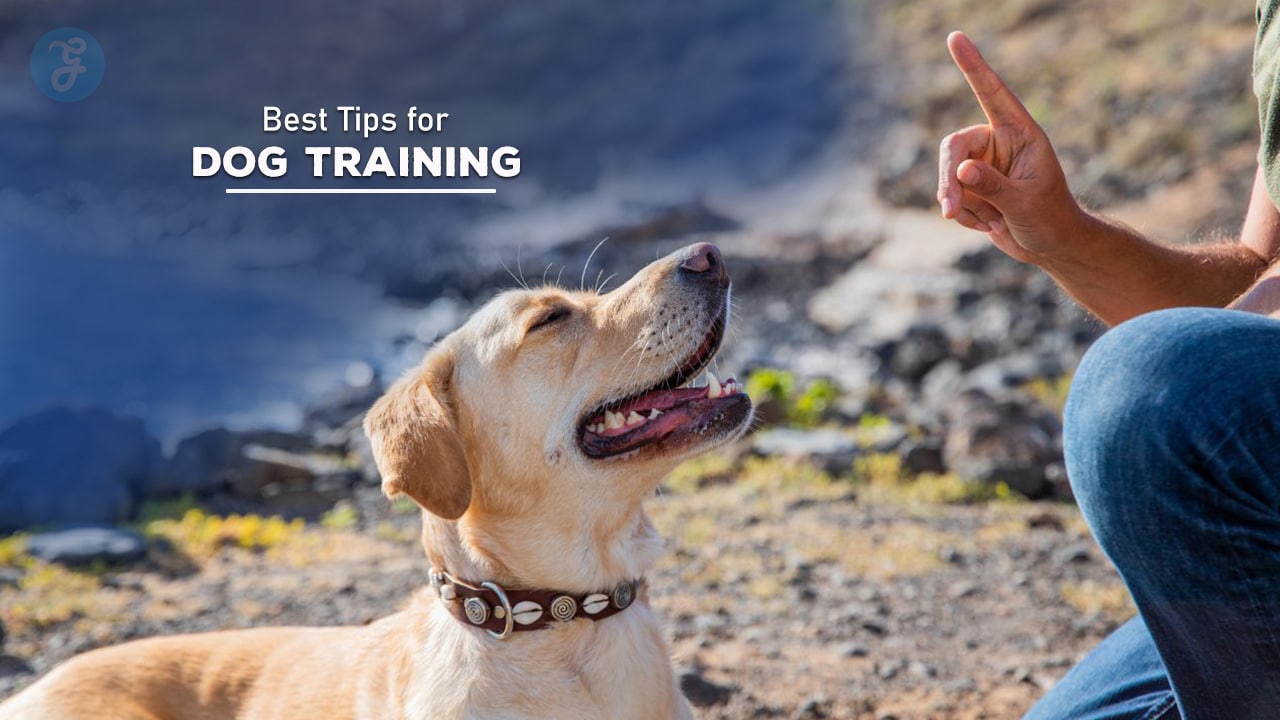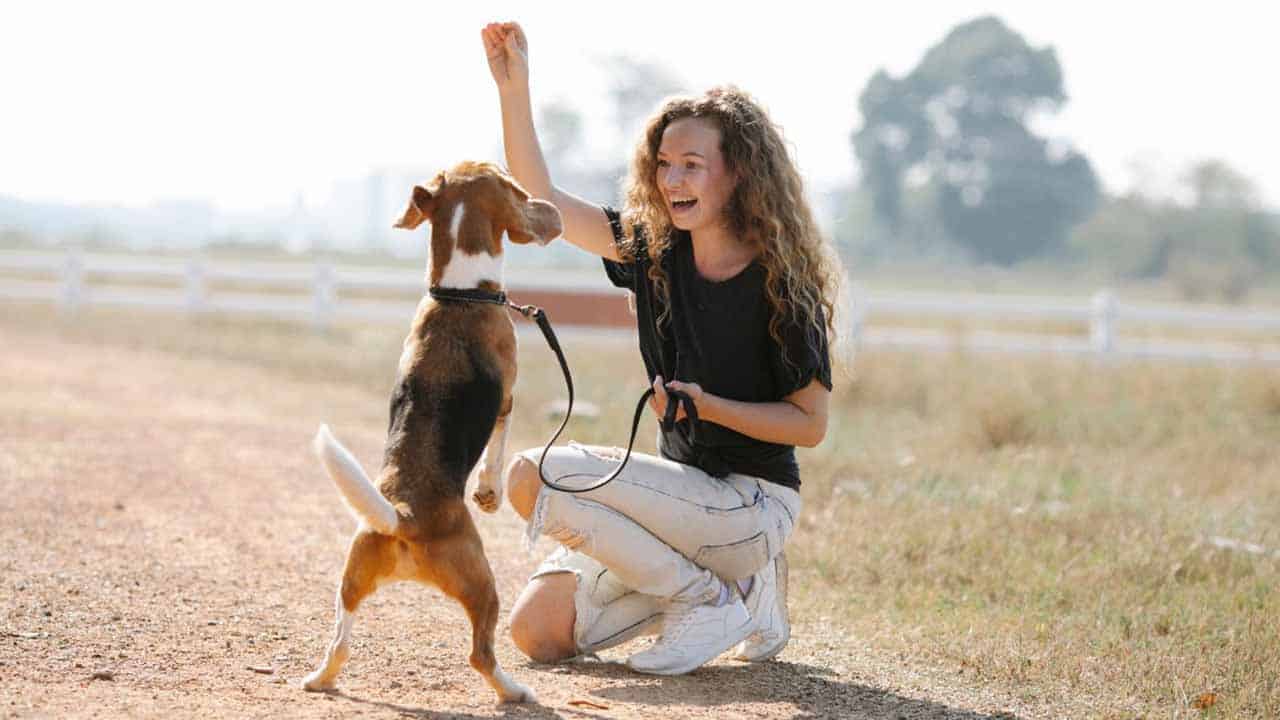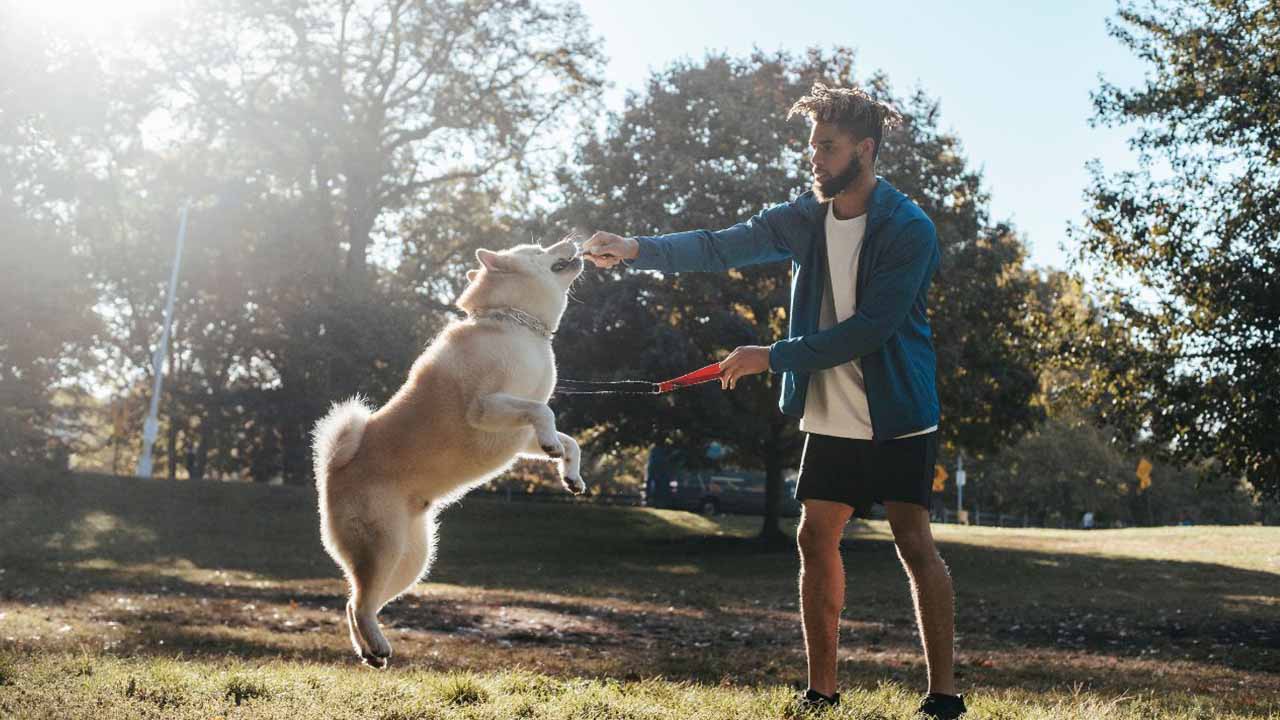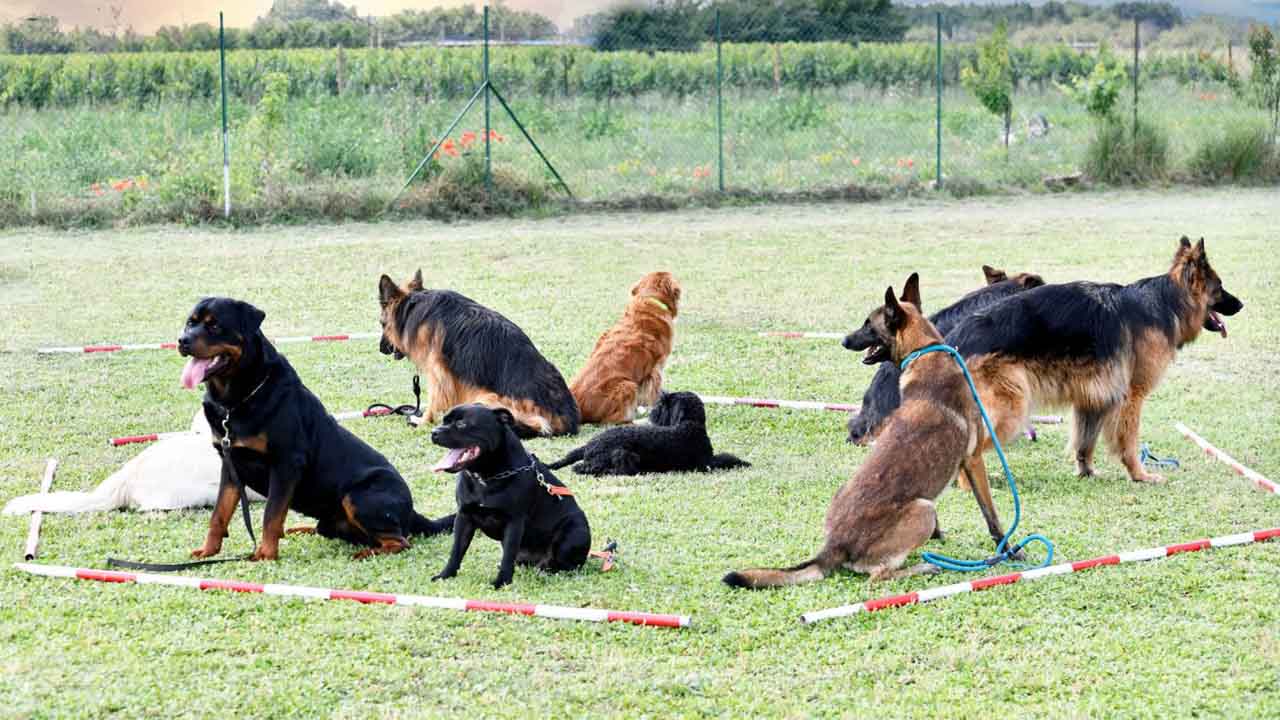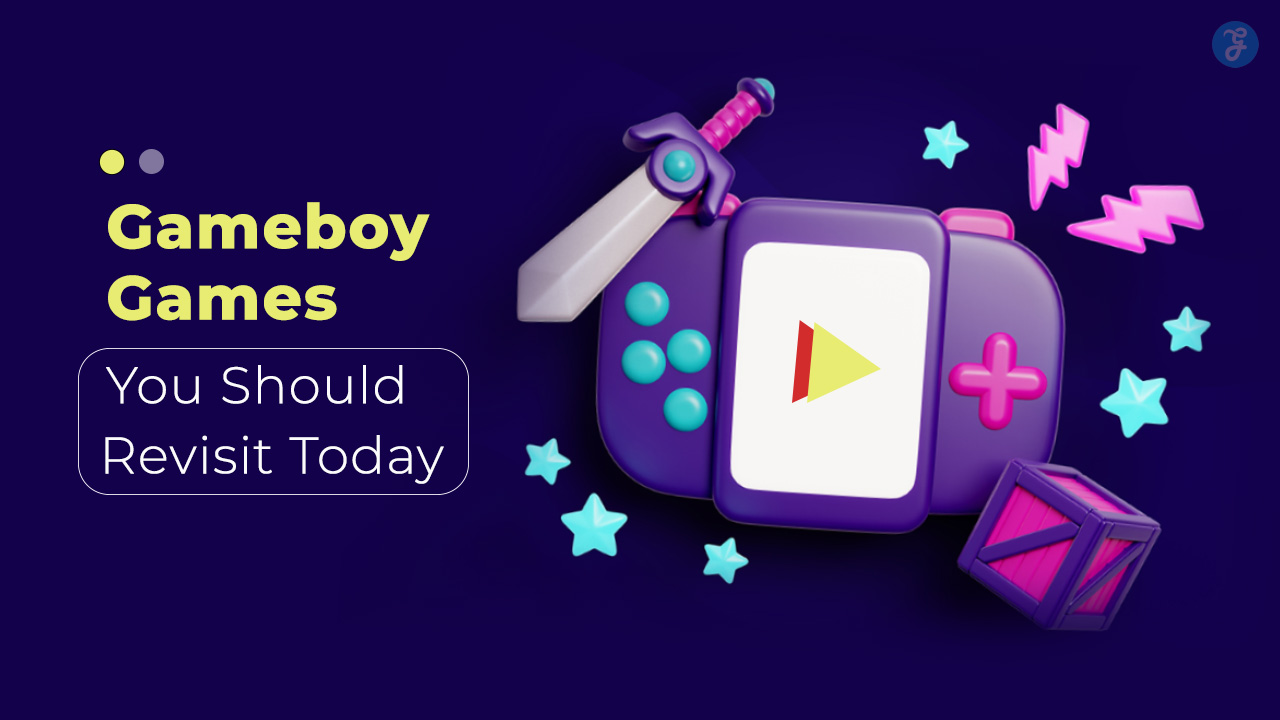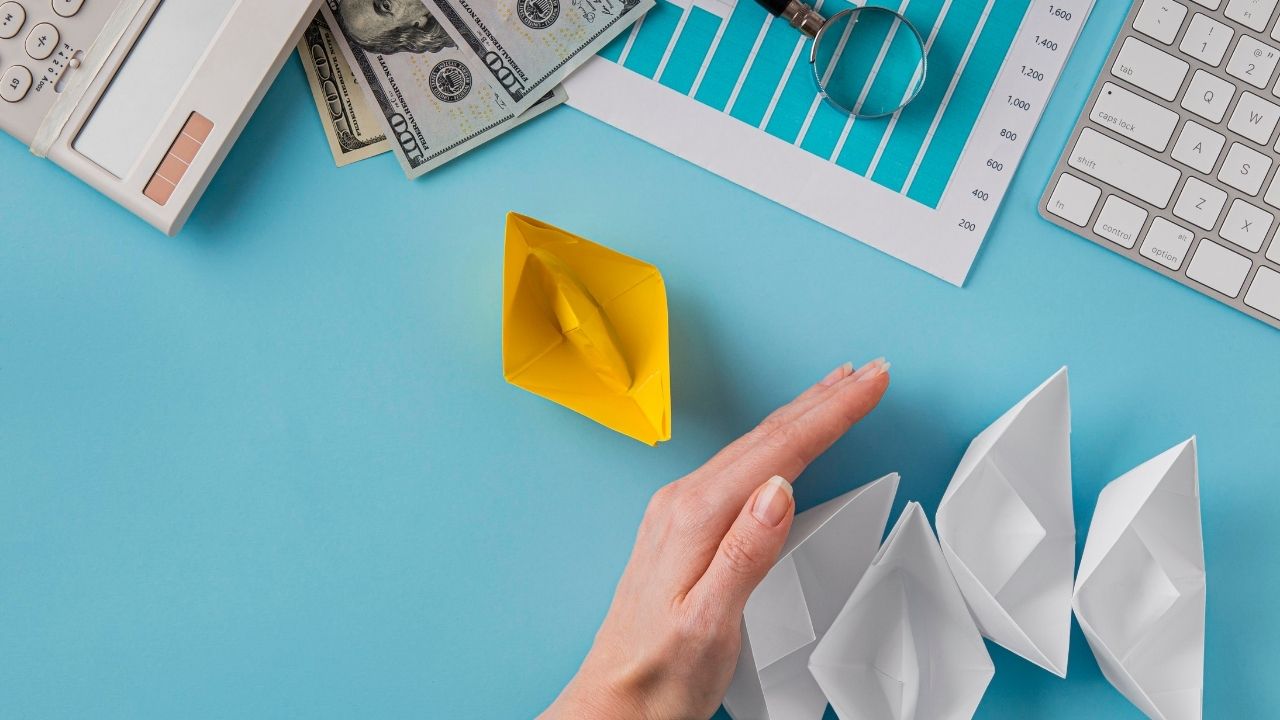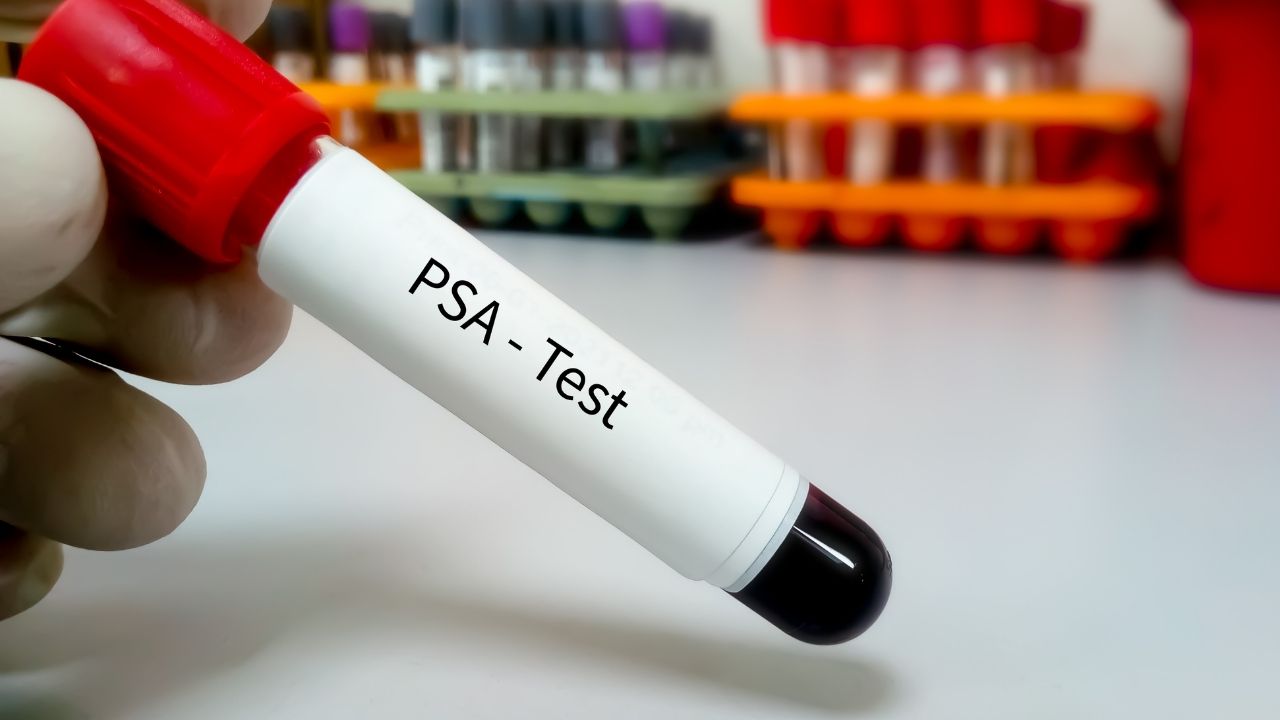Training your dog is an exciting journey. It helps you build a strong bond with your furry friend. A well-trained pup makes life easier and more fun for both of you.
Good training leads to a happy, obedient dog that listens to you. It’s not just about tricks – it’s about teaching your pup how to be a good canine citizen. With the right tips and methods, you can shape your dog’s behavior in positive ways. Let’s explore some of the best ways to train your four-legged pal. If you’re still looking for more guidance then our friends at Allbreeds Dog Training have a wealth of experience helping dog owners improve their relationships with their pets.
1. Start with Basic Commands
Teaching your dog basic commands is the first step in training. Start with simple cues like “sit,” “stay,” and “come.” These form the foundation for more advanced skills.
Choose one command to focus on at a time. Use clear, consistent words for each action you want your dog to perform. Short, one-word commands work best.
Practice in a quiet area with few distractions. This helps your dog focus on learning. Keep training sessions short, around 5-10 minutes each. Repeat sessions a few times daily.
Use treats to reward your dog when they follow a command correctly. Praise them with an excited voice and petting. This positive reinforcement encourages them to repeat the behavior.
Be patient and consistent. Some dogs learn quickly, while others need more time. Keep practicing and stay positive. Your dog will catch on with regular training.
As your dog improves, gradually add distractions. Practice commands in different rooms or outdoors. This helps your dog respond in various situations.
Remember to keep training fun and rewarding for your dog. With time and practice, these basic commands will become second nature to your pup.
2. Use Positive Reinforcement
Positive reinforcement is a powerful dog training method. It rewards good behavior instead of punishing bad actions. This makes your dog want to repeat the desired behaviors.
You can use treats, toys, or praise as rewards. Give the reward right after your dog does what you want. This helps them connect the action to the reward.
Choose a quiet place to start training. Too many distractions can make it hard for your dog to focus. Keep training sessions short and fun. This prevents your dog from getting bored or frustrated.
Be patient and consistent. It takes time for dogs to learn new things. Reward every small step towards the desired behavior. This encourages your dog to keep trying.
Don’t forget to use verbal cues along with rewards. Say “good dog” or use a clicker when they do the right thing. This helps your dog understand exactly what behavior earned the reward.
Positive reinforcement builds a strong bond between you and your dog. It makes training a pleasant experience for both of you. Your dog will be more eager to learn and obey when they associate it with good things.
3. Practice Consistent Training
Consistency is key when training your dog. Set a regular schedule for training sessions. Aim for short, daily sessions of 5-10 minutes each.
Use the same commands and hand signals every time. This helps your dog understand what you want. If you say “sit” one day and “down” the next for the same action, your pup will get confused.
Make sure everyone in your household uses the same commands. This prevents mixed messages. Create a list of commands and post it where everyone can see it.
Be patient and stick to your training plan. Dogs learn through repetition. It may take many tries before your pup gets it right. Don’t give up!
Reward good behavior every time. Use treats, praise, or toys your dog loves. This encourages them to repeat the desired action.
Stay calm and positive during training. If you get frustrated, take a break. Come back when you’re in a better mood. Your dog can sense your emotions and will respond better to a happy trainer.
4. Keep Training Sessions Short
Dogs have short attention spans. Long training sessions can make them bored or tired. Stick to 5-10 minute sessions for best results.
Short bursts of training work better than one long session. You can do several mini-sessions throughout the day. This keeps your dog engaged and excited to learn.
Focus on one or two commands per session. Don’t try to teach too much at once. Repeat the same exercises a few times to help your dog remember.
End each session on a positive note. Give lots of praise and treats for good behavior. This makes your dog want to train again next time.
Watch for signs your dog is losing interest. If they get distracted or stop responding, it’s time to end the session. You can always try again later when they’re more focused.
5. Use Hand Signals
Hand signals are a great way to train your dog. They work well with verbal commands. You can use them to teach basic skills like sit, stay, and come.
For “sit,” start with your palm facing up near your hip. Move your hand up towards your shoulder. This motion tells your dog to sit.
To signal “down,” begin with your hand at shoulder level, palm out. Then move it down towards the ground. Your dog will learn to lie down when they see this.
For “come,” start with your hand at your side, palm up. Bring it across your body to the opposite shoulder. This sweeping motion tells your dog to come to you.
The “stay” signal is simple. Hold your hand out flat, palm facing your dog. This tells them to stay in place.
Practice these signals with your dog often. Use treats to reward them when they respond correctly. Soon, your pup will understand what each hand signal means.
You can use hand signals alone or with voice commands. They’re useful in noisy places or when your dog is far away. Hand signals also help deaf dogs learn commands.
6. Incorporate Fun Games
Training your dog doesn’t have to be boring. You can make it enjoyable by adding games to your sessions. Games help your pup learn while having a good time.
Try playing “Name Game” with your dog. Say their name and give them a treat when they look at you. This teaches them to respond when called.
Another fun game is “Simon Says” with a doggy twist. Give your pup commands they know, like “sit” or “down,” followed by “Simon says.” It’s a great way to practice obedience.
You can also play “Find It” to work on scent skills. Hide treats around the house and encourage your dog to sniff them out. This game taps into their natural instincts.
For active pups, try “Fetch with a Twist.” Ask your dog to sit or lie down before throwing the toy. This combines play with impulse control training.
Remember to keep training sessions short and fun. Use plenty of praise and treats. Your dog will look forward to learning new things with you.
7. Socialize Your Dog Early
Getting your dog used to different people, animals, and places is key. Start when they’re young if you can. Take your pup to new spots often.
Let them meet friendly dogs and people. This helps them feel safe and happy as they grow up. Go to parks, stores, and busy streets.
Reward your dog for calm behavior around new things. Give treats and praise when they’re relaxed. This teaches them that new stuff is good.
Don’t force your dog if they seem scared. Let them go at their own pace. Short, fun trips work best for socializing.
If your dog is older, you can still help them. Take it slow and be patient. Use lots of treats to make new experiences positive.
Sign up for a training class. This lets your dog practice being around others in a safe place. You’ll learn tips from experts too.
Remember, a well-socialized dog is usually calmer and more confident. This makes life easier for both of you.
8. Gradually Increase Distractions
Training your dog to focus in distracting environments is key. Start in a quiet room with basic commands like “sit” and “stay.”
Once your pup masters these, move to slightly more challenging spots. Try the backyard or a less busy street.
Slowly add more distractions as your dog improves. Introduce toys, other people, or interesting smells nearby.
Keep training sessions short, about 5-10 minutes. This helps maintain your dog’s attention and prevents boredom.
If your dog gets distracted, calmly bring them back to the task. Reward them when they refocus on you.
Use high-value treats to keep your dog motivated in tougher situations. Gradually decrease treats as your dog gets better at ignoring distractions.
Practice in different locations to help your dog generalize their skills. Parks, pet stores, and outdoor cafes are good spots to try.
Be patient and consistent. It takes time for dogs to learn to focus with distractions around. Celebrate small wins along the way.
9. Reward Calm Behavior
Dogs often get excited and hyper. But calm behavior is important for a well-behaved pup. You can teach your dog to be calm by rewarding it when it’s quiet and relaxed.
Watch for moments when your dog is lying down peacefully. Give a treat or soft praise when you see this. This shows your dog that being calm is good.
You can also practice “settle” or “relax” commands. Ask your dog to lie down, then reward it for staying still. Start with short periods and slowly increase the time.
Ignore your dog when it’s jumping or barking for attention. Only give pets and treats when it’s calm. This teaches your dog that being quiet gets rewards.
Use a special mat or bed for calm time. Encourage your dog to go there and relax. Give treats when it stays put. Soon, your dog will link the spot with calmness.
Remember to stay calm yourself. Dogs pick up on your energy. If you’re relaxed, your dog is more likely to be calm too.
With time and practice, your dog will learn that calm behavior leads to good things. This makes for a happier home for both of you.
10. Be Patient and Persistent
Training a dog takes time and effort. You can’t expect your pup to learn everything overnight. Stay calm and keep working at it.
Remember that dogs learn at different speeds. Some may pick up commands quickly, while others need more practice. Don’t get frustrated if your dog doesn’t get it right away.
Consistency is key. Use the same words and hand signals each time you give a command. This helps your dog understand what you want.
Keep training sessions short and fun. Five to ten minutes a few times a day works well for most dogs. This keeps them engaged and eager to learn.
Celebrate small wins along the way. Did your dog sit for two seconds longer today? That’s progress! Praise and reward these little improvements.
If you’re struggling with a particular command, take a step back. Break it down into smaller parts. Work on each piece separately before putting it all together.
Don’t give up if your dog has an off day. Just like people, dogs can have good and bad days. Pick up where you left off next time.
11. Use a Clicker for Precision
Clicker training is a powerful tool for teaching your dog new behaviors. It uses a small device that makes a clicking sound to mark the exact moment your dog does something right.
When you click, you tell your dog “Yes, that’s exactly what I want!” Then you give a treat. This helps your dog understand which action earned the reward.
You can use a clicker to teach basic commands like sit, stay, and come. It’s also great for more complex tricks or behaviors. The key is to click at the right moment, then quickly give a treat.
Start with easy behaviors your dog already knows. Click and treat when they do it. Soon your dog will connect the click with doing something good.
For new behaviors, use the clicker to “shape” them step by step. Click and treat for small movements in the right direction. Gradually ask for more until your dog does the full behavior.
Be patient and keep sessions short. Practice often for best results. With time, your dog will learn to offer behaviors to earn clicks and treats.
12. Avoid Negative Punishment
Negative punishment can harm your bond with your dog. It’s best to skip this approach when training. Negative punishment means taking away something good when your dog misbehaves.
For example, ignoring your dog or stopping playtime when they jump on people. This can make your dog feel confused or stressed. It might even lead to more bad behavior.
Instead, focus on rewarding good actions. Give treats, praise, or toys when your dog does what you want. This helps them learn faster and makes training fun. Your dog will want to repeat good behaviors to get more rewards.
Remember, dogs respond better to kindness and positive methods. Harsh training can damage trust and make your dog afraid. Keep training sessions short and upbeat. If your dog gets frustrated, take a break and try again later.
Be patient and consistent with your training. Every dog learns at their own pace. Celebrate small wins and keep a positive attitude. Your dog will pick up on your energy and be more eager to learn.
13. Train with Treats Sparingly
Using treats for dog training can be effective, but it’s important not to overdo it. Treats should be a tool, not a crutch.
Start by using treats to reward good behavior during training sessions. As your dog learns commands, gradually reduce the frequency of treats.
Mix up rewards to keep your dog engaged. Sometimes use praise or petting instead of food. This prevents your pup from only responding when treats are visible.
Choose small, low-calorie training treats. Cut larger treats into tiny pieces. This lets you give more rewards without overfeeding your dog.
Save high-value treats for teaching difficult skills or in distracting environments. Use regular kibble or lower-value treats for simpler tasks.
Wean your dog off constant treats by introducing a variable reward schedule. Give treats randomly rather than every single time they obey a command.
Remember, your attention and praise are powerful motivators too. Use an excited voice and lots of petting to show your dog they’ve done well.
14. Practice Recall Regularly
Teaching your dog to come when called is crucial. It keeps them safe and makes walks more enjoyable. Start in a quiet place with few distractions. Use a treat or toy your dog loves.
Say your dog’s name and “come” in a happy voice. When they reach you, give lots of praise and the reward. Repeat this often in different spots around your home.
Once your dog gets good at indoor recalls, move outside. Use a long leash in a fenced area. Call your dog from different distances. Make it fun by running away as you call them.
Add distractions slowly. Have a friend stand nearby or toss a ball. Keep rewarding your dog for coming to you. Practice recalls daily, even for just a few minutes.
Never punish your dog when they come to you. This might make them scared to return next time. Always end recall training on a positive note.
Try playing “hot potato” with family members. Take turns calling your dog and giving treats. This makes recall training feel like a fun game for your pup.
15. Teach Proper Leash Walking
Teaching your dog to walk nicely on a leash is key for enjoyable walks. Start by getting your pup used to wearing a collar and leash. Let them wear these items around the house for short periods.
Next, pick a cue word like “yes” or a clicking sound. Use this when your dog is by your side. Give them a treat right after. This helps them learn the right spot to walk.
When you’re ready to go outside, bring lots of treats. Give your dog praise and rewards for walking next to you without pulling. If they start to pull, stop walking. Only move again when the leash is loose.
Keep training sessions short at first. Gradually increase the time as your dog improves. Be patient – it takes practice for dogs to learn good leash manners.
Remember to stay calm and positive during walks. Your dog can sense your mood. A relaxed attitude helps them feel more at ease while learning.
With time and practice, your dog will become a great walking partner. Stick with it, and soon you’ll both enjoy stress-free strolls together.
Understanding Dog Behavior
Dogs communicate through body language and exhibit various behaviors. Learning to interpret these signals and address common issues helps build a strong bond with your pet.
Body Language and Signals
Dogs use their bodies to express emotions and intentions. Tail position is a key indicator. A wagging tail usually means happiness, but a stiff, high tail can signal aggression. Ears also convey mood. Perked ears show interest, while flattened ears suggest fear or submission.
Eye contact matters too. Direct staring can be threatening to dogs. They often look away to show they’re not a threat. Yawning and licking lips can indicate stress or discomfort.
Posture reveals a lot. A relaxed dog stands with weight evenly distributed. A scared dog may crouch or tuck their tail. An aggressive dog might stand tall with weight forward.
Common Behavioral Issues
Excessive barking is a frequent problem. Dogs bark for many reasons: boredom, fear, or to get attention. Consistent training can help reduce unnecessary barking.
Chewing is natural for dogs but can be destructive. Provide appropriate chew toys and praise your dog for using them. This redirects the behavior to acceptable objects.
Jumping on people is often excitement but can be annoying or scary. Teaching your dog to sit for greetings helps curb this habit.
Leash pulling makes walks unpleasant. Use positive reinforcement to reward your dog for walking calmly by your side. Consistency is key in addressing this issue.
Effective Training Techniques
Training your dog takes skill and know-how. These methods will help you teach your pup good behavior.
Positive Reinforcement
Give treats and praise when your dog does something right. This makes them want to repeat good actions. Use small, tasty treats your dog loves. Say “good dog!” in a happy voice. Pet and play with them too.
Timing matters. Reward within seconds of the good behavior. This helps your dog connect the action to the treat. Start with easy tasks like “sit” or “come.” Break harder tricks into small steps.
Clicker training can work well. Click the device when your dog does the right thing, then give a treat. The click marks the exact moment of good behavior.
Consistency and Patience
Use the same commands each time. Pick one word for each action, like “down” for lying down. Everyone in your family should use the same words. This avoids confusing your dog.
Be patient. Dogs learn at different speeds. Some may get a new trick in minutes, others take days or weeks. Don’t get mad if your dog doesn’t catch on right away. Keep training sessions short, about 5-10 minutes.
Practice every day. Even a few minutes helps. Stick to a routine. Train at the same times if you can. This helps your dog know what to expect. Remember, building good habits takes time for dogs just like humans.
Address Specific Commands
Teaching your dog basic commands is key to successful training. These skills form the foundation for good behavior and obedience.
Sit and Stay
The “sit” command is often the first one taught to dogs. It’s simple but powerful. Start by holding a treat close to your dog’s nose. Slowly move your hand up and back. As your dog’s head follows the treat, their bottom will lower. When they sit, say “sit” and give the treat.
“Stay” builds on “sit.” Have your dog sit, then hold your palm out and say “stay.” Take a step back. If your dog stays, praise and treat them. If they move, start over. Slowly increase the time and distance. Practice in different places with distractions.
Recall and Come
Teaching your dog to come when called is crucial for safety. Start in a quiet place. Say your dog’s name followed by “come” in a happy voice. When they come to you, give lots of praise and a treat. Make it fun!
Practice recall on a long leash outdoors. Call your dog and run backward. This makes coming to you exciting. If they don’t respond, gently guide them with the leash. Never punish your dog for coming to you, even if it takes a while. Always reward this behavior to build a strong recall.
Takeaways
Training your dog is a rewarding journey that strengthens the bond between you and your furry friend.
The key to successful training lies in patience, consistency, and using positive reinforcement techniques.
By starting with basic commands, incorporating fun games, and gradually increasing distractions, you can shape your dog’s behavior in a positive and effective manner.
Remember, every dog learns at their own pace, so it’s important to celebrate small victories and remain persistent. With dedication and the right approach, you’ll not only have an obedient pup but also a happy and confident companion.
Training isn’t just about teaching tricks—it’s about building a lifelong relationship based on trust, respect, and understanding.


